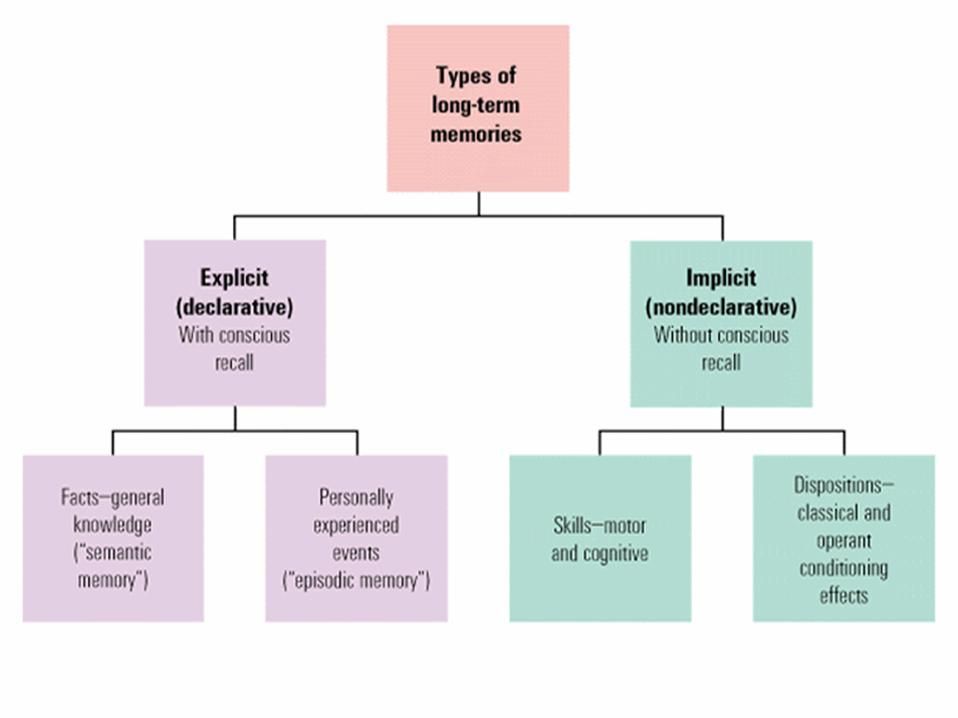Bipolar questionnaire nhs
Bipolar test | Quick, free and confidential
0203 326 9160
0203 761 7026
0203 761 7027
0203 761 7029
0203 326 91600203 761 70260203 761 70270203 761 7029
Fees & Payment Options
FAQs
Share this page
Question 1
Sometimes I am much more talkative than at other times
- Not at all
- A little
- Sometimes
- Often
- Quite a lot
Question 2
I have periods where I feel wired or hyper and am really active
- Not at all
- A little
- Sometimes
- Often
- Quite a lot
Question 3
I have periods where I feel really irritable or speeded up
- Not at all
- A little
- Sometimes
- Often
- Quite a lot
Question 4
I have had times where I am both depressed and elated at the same time
- Not at all
- A little
- Sometimes
- Often
- Quite a lot
Question 5
There are large variations in the quantity and quality of my work depending on my mood
- Not at all
- A little
- Sometimes
- Often
- Quite a lot
Question 6
I have periods where I cry a great deal and then at other times I feel really happy and joke or laugh excessively
- Not at all
- A little
- Sometimes
- Often
- Quite a lot
Question 7
I have times where I feel really optimistic about life and other times where I feel there is no hope
- Not at all
- A little
- Sometimes
- Often
- Quite a lot
Question 8
There are times where I have a lot more interest in sex than at other times
- Not at all
- A little
- Sometimes
- Often
- Quite a lot
Question 9
At times I feel really angry and hostile
- Not at all
- A little
- Sometimes
- Often
- Quite a lot
Question 10
I have periods of mental dullness and other periods of very creative thinking
- Not at all
- A little
- Sometimes
- Often
- Quite a lot
Question 11
At times I am very sociable and other times I just want to be left alone
- Not at all
- A little
- Sometimes
- Often
- Quite a lot
1
Question 1 of 11
When answering the above statements think about whether they have usually applied to you across much of your adult life - if the symptoms you are experiencing are new to you it could be indicative of certain types of Bipolar or it could be a result of something else.
This test assumes that you have already had at least one episode of depression in your life, and will give an indication as to whether you are experiencing the most common symptoms of Bipolar disorder. It cannot replace a full assessment nor should be used to self diagnose or decide upon a treatment plan.
This test was adapted from: Goldberg Bipolar Spectrum Screening Questionnaire, a Screening Test for Bipolar Spectrum Disorders.
Need to talk?
0203 326 9160 0203 326 9160
A free, confidential call could quickly help you get the support you need. Your call will be answered by an assistant psychologist who will listen to your concerns before explaining your options and suggesting the most appropriate treatment.
Take another test
View all tests
We have online mental health quizzes for many conditions including ADHD, autism, anxiety, depression, PTSD, and more. Each one should take no longer than five minutes.
No Internet Connection
FREE Bipolar Disorder Test & Screening
Bipolar Disorder
Do I have bipolar? Take this bipolar disorder quiz to see if you may benefit from further diagnosis and treatment from a mental health professional.
Medical ReviewerRandy Bressler, PsyD
Who Is This Bipolar Disorder Quiz For?
The questions below relate to life experiences that are common among people who have bipolar disorder. Please read each question carefully, and indicate how often you have experienced the same or similar challenges in the past few weeks.
How Accurate Is It?
This quiz is NOT a diagnostic tool. Mental health disorders can only be diagnosed by a licensed mental health professional or doctor.
Psycom believes assessments can be a valuable first step toward getting treatment. All too often people stop short of seeking help out of fear their concerns aren't legitimate or severe enough to warrant professional intervention.
What's the Screening Test for Bipolar Disorder Like?
Talking with a doctor or mental health professional is the first step in identifying bipolar disorder. Specific criteria for diagnosis are laid out in the American Psychiatric Association’s Diagnostic and Statistical Manual of Mental Disorders (DSM-5).
Specific criteria for diagnosis are laid out in the American Psychiatric Association’s Diagnostic and Statistical Manual of Mental Disorders (DSM-5).
In a screening for bipolar disorder, you'll be asked several questions about your symptoms and how long they have occurred.
What Other Tests Will You Need to Take?
A doctor may perform a physical evaluation to rule out any other conditions that may be causing symptoms.
What are Potential Results of Screening for Bipolar?
An estimated 2.8% of U.S. adults have been diagnosed with bipolar disorder. If left undiagnosed or untreated, the condition usually worsens, causing more problems with mood, energy and clear thinking.
If a diagnosis comes back as negative for bipolar, but you still experience symptoms, a health care professional may screen you for a similar condition such as schizophrenia or depression.
Getting a professional screening can start you on the path toward treatment, which can help improve your quality of life.
What are the Treatment Options for Bipolar Disorder?
Typically, a combination of medication and psychotherapy is recommended to treat bipolar disorder.
Psychotherapy
Several types of therapy may be helpful in treating bipolar issues:
Interpersonal and social rhythm therapy (IPSRT). IPSRT focuses on stabilizing daily rhythms, since following a consistent routine in sleeping, eating, and exercising may help you to manage your moods.
Cognitive behavioral therapy (CBT). By identifying unhealthy, negative beliefs and behaviors and replacing them with healthy, positive ones, CBT can help identify what triggers your bipolar episodes. You also learn effective strategies to manage stress and to cope with upsetting situations.
Dialectical Behavior Therapy: Including both individual and group therapy, DBT teaches mindfulness and acceptance skills such as “the ability to experience moment-to-moment thoughts, emotions and their accompanying physical sensations from an observer’s stance, without negative judgment.
 ”
”Psychoeducation. Learning about bipolar disorder can help you and your loved ones understand the condition. Knowing what’s going on can help you get the best support, identify issues, make a plan to prevent relapse, and stick with treatment.
Family-focused therapy. Family support and communication can help you stick with your treatment plan and help you and your loved ones recognize and manage warning signs of mood swings.
Medications
Many medications can effectively treat bipolar disorder:
Mood stabilizers. Used to control manic or hypomanic episodes, these include lithium (Lithobid), valproic acid (Depakene), divalproex sodium (Depakote), carbamazepine (Tegretol, Equetro, others), and lamotrigine (Lamictal)).
Antipsychotics. Adding an antipsychotic may help relieve depressive or manic symptoms that persist despite treatment with other drugs. Taking these alone or with a mood stabilizer may help.
 Such drugs include: olanzapine (Zyprexa), risperidone (Risperdal), quetiapine (Seroquel), aripiprazole (Abilify), ziprasidone (Geodon), lurasidone (Latuda) or asenapine (Saphris).
Such drugs include: olanzapine (Zyprexa), risperidone (Risperdal), quetiapine (Seroquel), aripiprazole (Abilify), ziprasidone (Geodon), lurasidone (Latuda) or asenapine (Saphris).Antidepressants. Employed to manage depression, antidepressants are usually prescribed with a mood stabilizer or antipsychotic, since an antidepressant alone can sometimes trigger a manic episode.
Antidepressant-antipsychotic. The medication Symbyax combines the antidepressant fluoxetine and the antipsychotic olanzapine. It works as a depression treatment and a mood stabilizer.
Anti-anxiety medications. Benzodiazepines may help with anxiety and improve sleep but are usually used on a short-term.
Your privacy is important to us. All results are completely anonymous. This quiz is not a substitute for a proper assessment from a health care professional.
Alchemer - amazing survey software for business. Please take my survey now
This test is based on the bipolar screening questionnaire created by Dr. Ivan Goldberg. If you think you may be suffering from Bipolar Disorder or any other mental health condition, PsyCom strongly recommends that you seek help from a doctor in order to receive a proper diagnosis and support.
Ivan Goldberg. If you think you may be suffering from Bipolar Disorder or any other mental health condition, PsyCom strongly recommends that you seek help from a doctor in order to receive a proper diagnosis and support.
Bipolar Disorder FAQs
How is bipolar disorder diagnosed?
Bipolar disorder is diagnosed through a clinical interview with a licensed mental health professional, explains Simon A. Rego, PsyD, Chief Psychologist at Montefiore Medical Center and Associate Professor of Psychiatry and Behavioral Sciences at Albert Einstein College of Medicine in New York City.
“Sometimes, the mental health professional will also ask the person to complete some assessment measures to aid in the diagnosis,” Rego says. “They may also ask to speak with a family member or partner, or other significant person in the person’s life, in order to get additional information about the impact the disorder has had on the person and their relationships. ”
”
Who can diagnose bipolar?
Bipolar disorder is most often diagnosed by a mental health professional, such as a psychologist, psychiatrist, or social worker.
When is bipolar diagnosed?
Bipolar disorder is typically diagnosed during the late teen years or early adulthood, says Simon A. Rego, PsyD, Chief Psychologist at Montefiore Medical Center and Associate Professor of Psychiatry and Behavioral Sciences at Albert Einstein College of Medicine in New York City. Occasionally, bipolar symptoms can appear in children.
To be diagnosed with bipolar disorder, the person must have experienced at least one depressive episode and one manic or hypomanic episode.
How long does it take to diagnose bipolar disorder?
Diagnosing the disorder can be done in one or two assessment sessions, says Simon A. Rego, PsyD, Chief Psychologist at Montefiore Medical Center and Associate Professor of Psychiatry and Behavioral Sciences at Albert Einstein College of Medicine in New York City. However, because bipolar disorder can be confused with other disorders such as depression and borderline personality disorder, getting the correct diagnosis can take some time.
However, because bipolar disorder can be confused with other disorders such as depression and borderline personality disorder, getting the correct diagnosis can take some time.
For example, some research suggests that it takes an average of three and a half years to confirm a diagnosis of bipolar disorder after the first major mood episode, with other research suggesting it can take even longer, Rego says.
Can people tell they are bipolar?
People can often tell that something is wrong (often with their mood), but may not always be able to accurately label it as bipolar. For example, it is frequently easy for people to know when they are depressed, but sometimes symptoms of mania go unnoticed, or feel “good,” so they are not as easily seen as an issue, says Simon A. Rego, PsyD, Chief Psychologist at Montefiore Medical Center and Associate Professor of Psychiatry and Behavioral Sciences at Albert Einstein College of Medicine in New York City.
Can bipolar disorder go away?
Bipolar disorder tends to be seen as an ongoing condition that waxes and wanes throughout one’s life, says Simon A. Rego, PsyD, Chief Psychologist at Montefiore Medical Center and Associate Professor of Psychiatry and Behavioral Sciences at Albert Einstein College of Medicine in New York City.
“Fortunately, the symptoms can often be controlled and stabilized in most cases when proper treatment (ideally, the combination of medication and psychotherapy) is in place,” Rego says.
Can bipolar disorder get worse with age?
Bipolar disorder may get worse with age—but this is generally the case over time if it is left untreated, explains Simon A. Rego, PsyD, Chief Psychologist at Montefiore Medical Center and Associate Professor of Psychiatry and Behavioral Sciences at Albert Einstein College of Medicine in New York City. If treated with a combination of medication and therapy, people have a much better chance of managing their bipolar disorder, Rego says.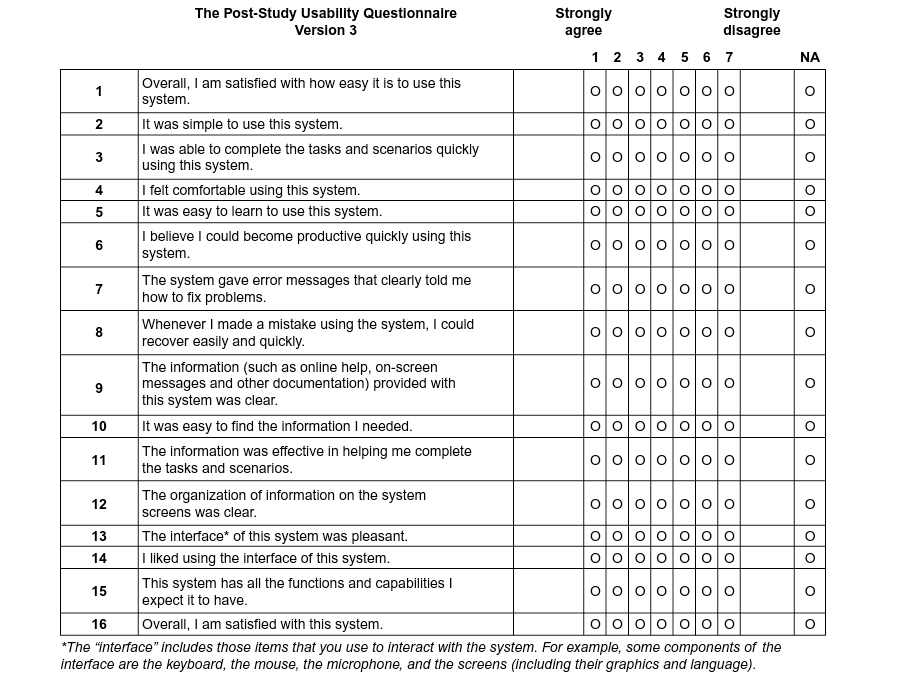 “Even then, it’s important for people to monitor their symptoms and seek help right away if they start to feel a change in their mood,” he says.
“Even then, it’s important for people to monitor their symptoms and seek help right away if they start to feel a change in their mood,” he says.
Can anxiety turn into bipolar?
There is no research evidence that suggests that anxiety can turn into bipolar disorder, says Simon A. Rego, PsyD, Chief Psychologist at Montefiore Medical Center and Associate Professor of Psychiatry and Behavioral Sciences at Albert Einstein College of Medicine in New York City. People with bipolar disorder may experience feelings of anxiety, however, and may also confuse some of the symptoms of bipolar disorder for symptoms of anxiety.
In addition, some of the symptoms of bipolar disorder can also be associated with some of the anxiety disorders, Rego says. And some people may have both an anxiety disorder and bipolar disorder.
“So it's not always so easy to sort these things out,” Rego says. “It is much more important to seek professional help if you’re experiencing symptoms that are causing you distress or interference in your ability to function in life.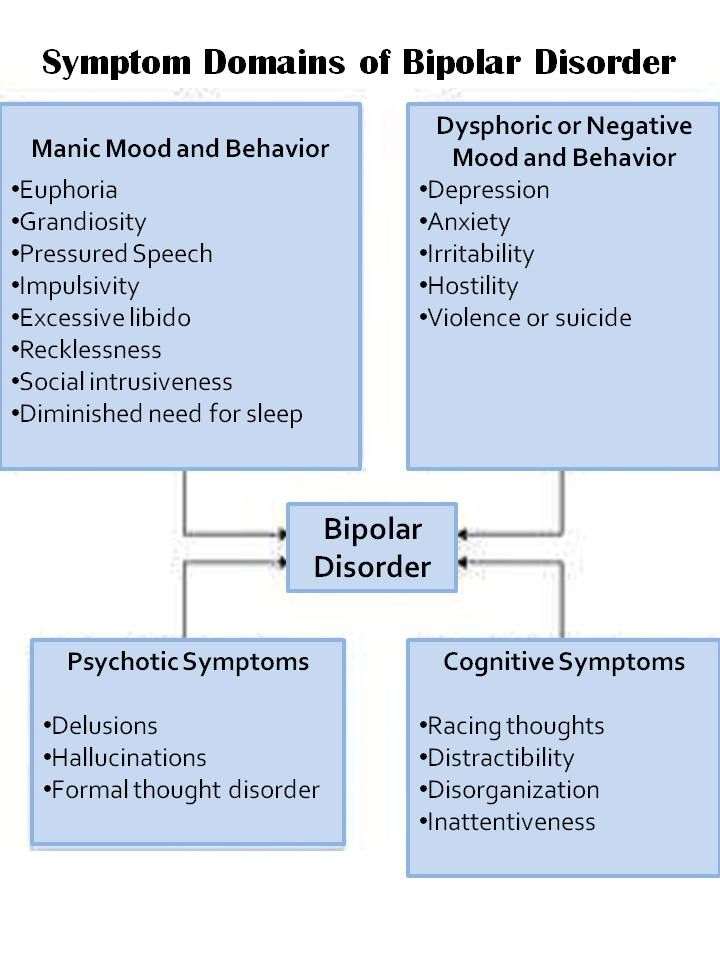 ”
”
Notes: This article was originally published March 29, 2016 and most recently updated November 11, 2021.
Endoscopic dissection of the perforating veins of the leg in the treatment of severe forms of chronic venous insufficiency
1. Alekperova T.V. Ultrasonic phlebography experience of application in modern phlebological practice. Part 1. Diagnostic aspects. Methodology. // Angiology today. -1999. - No. 5. - P. 2 - 9.
2. Alekperova T.V. Ultrasonic phlebography experience of application in modern phlebological practice. Part 2. Clinical aspects. Solution of diagnostic problems and choice of therapeutic tactics // Angiology today. - 2000. - № 6. - S. 2 - 8.
3. Artyukhina E.G. Possibilities of duplex scanning for phlebological diagnostics // Abstracts of the Second Conference of the Association of Phlebologists of Russia. Materials. Moscow. October 6-7, 1999. P. 192.
4. Askerov N.G. Surgical treatment of patients with inductive-ulcerative form of chronic venous insufficiency of the lower extremities: Ros.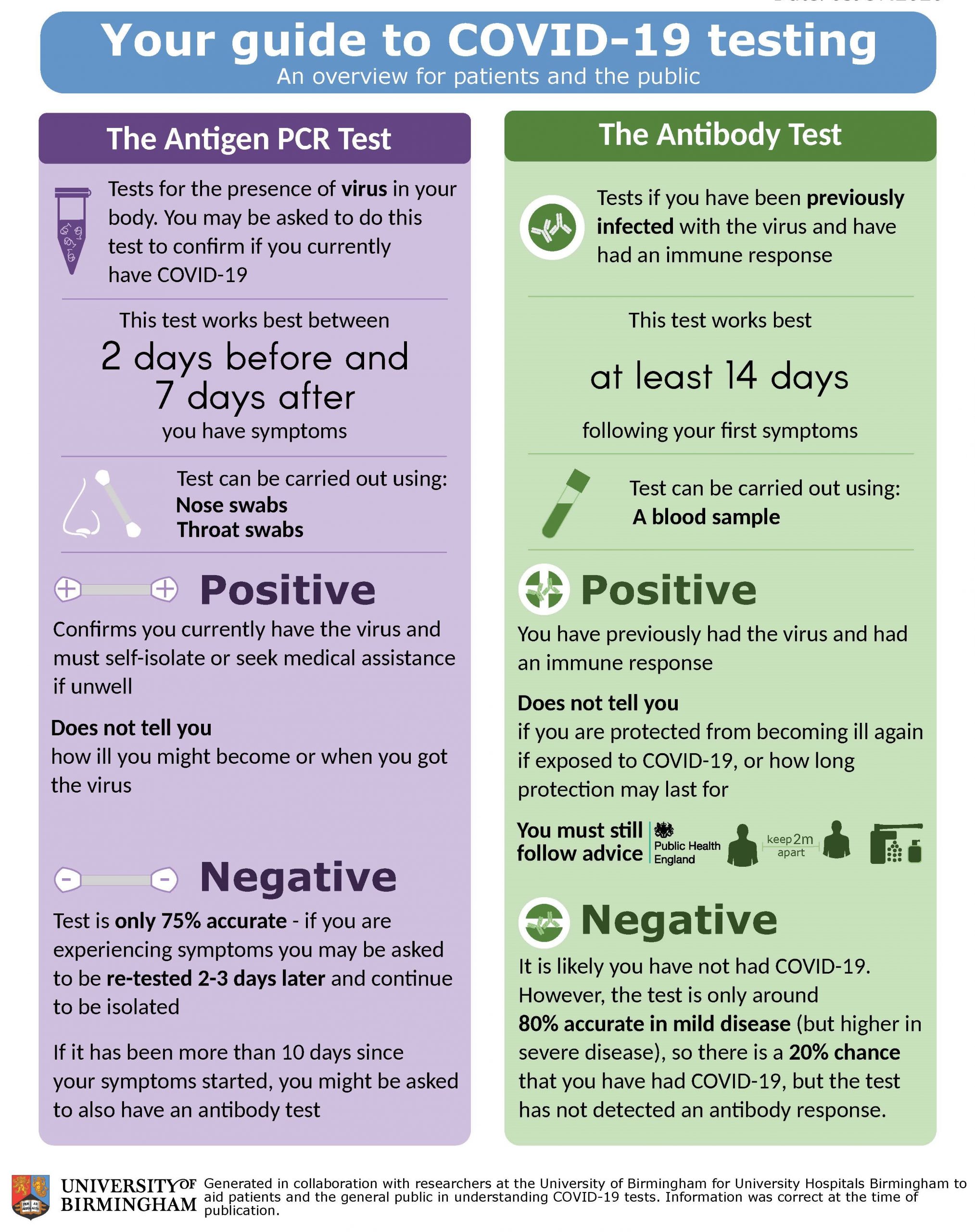 AMN. Institute of Surgery. A. V. Vishnevsky. Abstract diss. cand. honey. Sciences. M.1994. -25 s. + ill.
AMN. Institute of Surgery. A. V. Vishnevsky. Abstract diss. cand. honey. Sciences. M.1994. -25 s. + ill.
5. Askerkhanov R.P. On the role of communicating veins and methods of their separation in chronic venous insufficiency of the lower extremities. Bulletin of Surgery. nineteen78.-T. 120. - No. 5. - P. 46 - 52.
6. Bogachev V.Yu. Bogachev V.Yu., Vasilenko Yu.V., Ignatenko S.N. etc. // Herald of Surgery. 1978.- No. 8. - P. 70 - 74.
7. Bogachev V.Yu., Vasilenko Yu.V., Ignatenko S.M. Endoscopic technique in phlebology (Literature review) // Thoracic and cardiovascular surgery. 1994. -№1. pp. 67-71.
8. Bogdanov A.E. Modern principles of surgical treatment of post-strombophlebitic disease // Abstract of the thesis. diss. dokg. honey. Sciences. M., 1993. - 27 p.
9. Boitsov N.I., Evtikhov R.M., Potapov N.A. The state of the musculo-venous pump of the lower leg with various methods of operations for varicose veins. // Surgery. -1997. No. 8. - P. 57 - 80.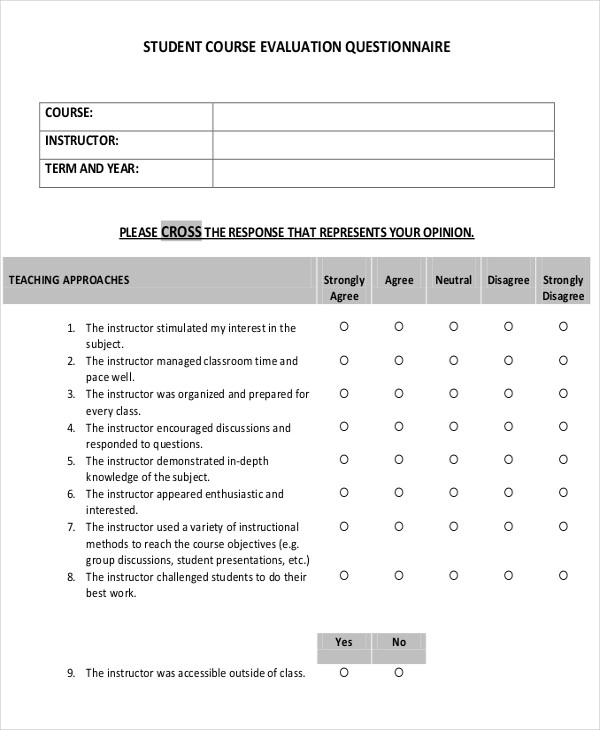
10. Bykov A.V., Larin S.I., Nazaruk A.S. The problem of choosing the optimal volume of surgery in patients with varicose veins. report IX All-Russian. congress of surgeons. Volgograd. - 2000. - S. 300 - 301.
11. Vasyugkov V.Ya. Choice of treatment for trophic leg ulcers in patients with chronic venous insufficiency of the lower extremities. Khirurgiya. -nineteen86. No. 10, - P. 103 - 108.
12. Vasyutkov V.Ya., Protsenko N.V. Trophic ulcers of the foot and leg. M., 1993. 160 p.
13. Vasyutkov V.Ya., Bogachev V.Yu. Venous trophic ulcers of the lower extremities. Russian medical journal. 1999. - Volume 7.-No. 13.-S. 616620.
14. Vedensky A.N. Varicose disease. Leningrad: Medicine, 1983. 206 p.
15. Vedensky A.N. Postgrombophlebitic disease L. -1986 - 208 p.
16. Gavrilenko AV. Diagnosis and treatment of chronic venous insufficiency. M.: 1999.152 p.
17. Gavrilov S.G., Kuznetsov AN. Duplex angioscanning in the differential diagnosis of trophic ulcers // Abstracts of the Second Conference of the Association of Phlebologists of Russia. Materials. Moscow. October 6-7, 1999 -S. 37.
Materials. Moscow. October 6-7, 1999 -S. 37.
18. Gervaziev V.B. Hidden exclusion of perforating and varicose veins of the lower extremities in chronic venous insufficiency (message 2) // Surgery 1999. No. 5. - P. 55 - 58.
19. Gostishchev V.K., Khokhlov A.M. To the pathogenesis and surgical tactics in the ulcerative stage of varicose veins of the lower extremities // Bulletin of Surgery. -nineteen84. T. 133. - No. 8. - P. 59 - 63.
20. Daudyaris Y.P. Diseases of the veins and lymphatic system of the extremities. - M: Medicine, 1984. -190 p.
21. Jitava I.G. Surgical treatment of chronic venous insufficiency of the lower extremities complicated by trophic ulcers / Djitava I.G., Bushvshchenko I.A., Shovsky O.L. etc. // Surgery. 1991. - No. 6. - S. 60-63.
22. Jitava I.G. Treatment of varicose and post-phlebitic ulcers of the lower extremities // Ros. state honey. un-t. Abstract diss. cand. honey. Sciences. M.- 1993.16s. + ill.
23. Dumpe E. P., Ukhov Yu.I., Shvalb P.G. Physiology and pathology of venous circulation of the lower extremities. - M. Medicine, 1982. -168 with ill.
P., Ukhov Yu.I., Shvalb P.G. Physiology and pathology of venous circulation of the lower extremities. - M. Medicine, 1982. -168 with ill.
24. Zavyalov E.Dboytsov N.I. Subfascial dissociation of the deep veins of the lower leg from a small access with varicose veins. Khirurgiya. 1990. -№11.-S. 124- 127.
25. Zubarev F.R., Bogachev V.Yu., Mitkov V.V.: Ultrasound diagnosis of diseases of the veins of the lower extremities. M.: Vidar, 1999. -104 p. or.
26. Ismailov AA, Kuliev RA Ultrasonic low-frequency cavitation in purulent surgery. Review // Bulletin of Surgery. -nineteen85. T. 134. - No. 2. - S. 146-149.
27. Kaidorin A.G. Possibilities for improving the results of surgical treatment of varicose veins // Novosibirsk Research Institute of Circulatory Pathology. Abstract diss. cand. honey. Sciences. Novosibirsk. -1995. 21 p. + ill.
28. Kaidorin A.G. Five-year experience in studying the possibilities of triplex angioscanning in varicose veins / Kaydorin A. G., Kraskov A.M., Rudenko V.S. and others // Phlebolymphology. -1999. No. 10 - P. 18 - 21.
G., Kraskov A.M., Rudenko V.S. and others // Phlebolymphology. -1999. No. 10 - P. 18 - 21.
29. Karalkin A.V. Instrumental diagnosis of varicose veins / Karalkin A.V., Bogachev V.Yu., Gavrilov S.G., Zolotukhin I.A. // Annals of Surgery. nineteen98. - No. 5. - S. 55-60.
30. Kirienko A.I. Varicose veins: when and how to treat? // New honey. magazine. 1996. No. 1-2. P. 3 - 7.
31. Kirienko A.I. Minimally invasive surgery for varicose veins // Phlebolymphology. -1998. No. 9. - S. 13 -16.
32. Kirienko A.I., Bogachev V.Yu., Zolotukhin I.A. Endoscopic dissection of perforators // Phlebolymphology -1997, No. 5. - P. 13 - 54.
33. Kolobova O.I., Chernenko V.F. Staged rehabilitation of patients with chronic venous insufficiency of the lower extremities // Abstracts of the Second Conference of the Association of Phlebologists of Russia. Moscow. October 6-7 1999. P. 190.
34. Konstantinova G.D. Some issues of phlebosurgery in the light of in-depth knowledge of the anatomy of the venous bed of the lower extremities / Konstantinova G. D., Bogdanov A.E., Drozd O.V. and others // Surgery. -1994. Number 3. - P. 49 - 54.
D., Bogdanov A.E., Drozd O.V. and others // Surgery. -1994. Number 3. - P. 49 - 54.
35. Konstantinova G.D., Alekperova T.V., Donskaya E.D. Outpatient treatment of patients with varicose veins of the lower extremities // Annals of Surgery. 1996. - No. 2. - P. 52 - 55.
36. Konstantinova G.D., Alekperova T.V. Place of ultrasonic phlebography in minimally invasive technology for the treatment of varicose veins of the lower extremities // Phlebolymphology. -nineteen97. - No. 5. P. 8 -12.
37. Konstantinova GD et al. Ultrasound examination in the diagnosis of chronic diseases of the veins of the lower extremities / Konstantinova GD, Bogachev V.Yu., Zubarev AR, Bogdanov AE. //Surgery. 1991. - No. 10. - P. 105 - 111.
38. Konstantinova G.D., Mamaev V.E. Substantiation of the volume of surgery for varicose veins of the lower extremities. Bulletin of Surgery. 1987. - T. 138. - No. 5. - S. 50-54.
39. Kuznetsov N.A., Zheltikov A.N., Barinov V.E. Staged surgical treatment of trophic leg ulcers in patients with chronic venous insufficiency // Abstracts of the Second Conference of the Association, Phlebologists of Russia.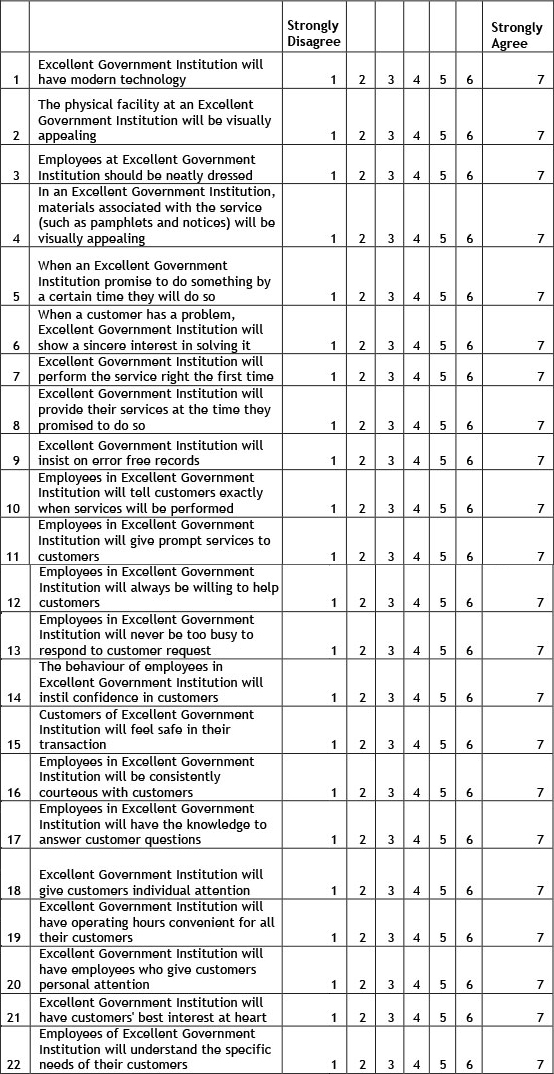 Materials. Moscow. October 6-7 1999. P. 23.
Materials. Moscow. October 6-7 1999. P. 23.
40. Kuznetsov N.A. Kuznetsov N.A., Zheltikov A.N., Teleshov B.V. Staged surgical treatment of chronic venous insufficiency with an open trophic ulcer. etc. // Phlebolymphology. 2000. -№11. - S. 11-13.
41. Kuzovlev S.P. Surgical treatment of trophic ulcers of the lower extremities of venous etiology // Abstracts of the Second Conference of the Association of Phlebologists of Russia. Materials. October 6-7, 1999. P. 17.
42. Kulikov V.P. Color duplex scanning in the diagnosis of vascular diseases. Novosibirsk, SO RAMS. -nineteen97. P. 204.
43. Surgical treatment of venous ulcers of the lower extremities // L.I. Panasenkov, V.V. Pavlenko, V.N. Sergeev and others // Abstracts of the Second Conference of the Association of Phlebologists of Russia. Materials. Moscow. October 6 7, 1999 -S. 56.
44. Larin SI Ultrasound semiotics of complicated forms of varicose veins // Abstracts of the Second Conference of the Association of Phlebologists of Russia. Materials. Moscow. October 6-7, 1999. P. 44.
Materials. Moscow. October 6-7, 1999. P. 44.
45. Lesko V.A., Malashitsky E.A. Remote perforantectomy. // Abstracts of the Second Conference of the Association of Phlebologists of Russia. nineteen99. P. 174.
46. Martov Yu.B., Sushkov S.A., Khmelnikov V.Ya. Surgical tactics in varicose veins of the lower extremities // News of Surgery. 1997. - No. 1. -S. 27-30.
47. Maposhenko A.A., Vasiliev V.E., Pyshakov G.A. Non-television remote subfascial dissection of perforant veins of the lower leg from mini-access // Abstracts of the Second Conference of the Association of Phlebologists of Russia. 1999.-S. 168.
48. Mozgovoy P.V., Ievlev V.A., Ndzhakha K. The choice of treatment method for communicating veins in patients with decompensated stages of chronic venous insufficiency // Abstracts of the Second Conference of the Association of Phlebologists of Russia 1999. P. 71.
49. Nagovitsyn E.S. Nagovitsyn E.S., Balyasnikov N.V., Antropova N.V. Endoscopic correction of venous blood flow of the leg. etc.// Bulletin of surgery. -1986. T. 137.-No. 11.-S.48-51.
etc.// Bulletin of surgery. -1986. T. 137.-No. 11.-S.48-51.
50. Nagovitsyn E.S. Nagovitsyn E.S., Balyasnikov N.P., Antropova N.V. Endoscopic electrocoagulation of the communicating veins of the leg. etc. // Surgery. -1987. No. 12. - P. 60 - 61.
51. Nagovitsyn E.S. Nagovitsyn E.S., Balyasnikov N.P., Stolyarov V.V. Vein-preserving operations in combination with endoscopic electrocoagulation of communicating veins. etc. //Bulletin of surgery. nineteen88. - No. 3. - P. 92 - 93.
52. Nagovitsyn E.S., Lipnitsky E.M., Balyasnikov N.P. Endoscopic coagulation of communicating leg veins in chronic venous insufficiency // Soviet medicine. -1987. No. 12. - S. 109 -110.
53. Ovchinnikov V.A., Vereshchagin N.A. Two-stage surgical treatment of trophic leg ulcers in chronic venous insufficiency // Abstracts of the Second Conference of the Association of Phlebologists of Russia. Materials. Moscow. 6 October 7, 1999 - S. 98.
54. Pomerantsev V.P. Diagnosis, treatment and quality of life // Clinical medicine. 1989; No. 9. - S. 3-8.
1989; No. 9. - S. 3-8.
55. Rzaev N.M., Kosaev D.V. Complex treatment of trophic ulcers in varicose veins // Surgery. -1989. No. 9. - P. 92 - 97.
56. Romanovsky A.V., Vasyutkov V.Ya., Sadov S.V. Economic losses in the treatment of patients with trophic ulcers of the lower extremities // Abstracts of the Second Conference of the Association of Phlebologists of Russia. Materials. Moscow. 6 October 7, 1999 - S. 68.
57. Saveliev V.S., Dumpe E.P., Yablokov E.G. Diseases of the main veins. -M, 1972.-440 p.
58. Saveliev B.C. Modern trends in the surgical treatment of chronic venous insufficiency // Phlebolymphology. -1996. №1.- P. 5 - 7.
59. Saveliev V.S., Kirienko A.I. Endoscopic operation of Linton // Surgery. 1997. - No. 3. - S. 24 - 26.
60. Saveliev V.C. Varicose veins current state of the old surgical problem // Annals of Surgery. -1999. - No. 2. - S. 6 -10.
61. Saveliev V.S., Kirienko A.I., Bogachev V.Yu. Venous trophic ulcers. Myths and reality // Phlebolymphology. 2000. - No. 11. - S. 5 -10.
Myths and reality // Phlebolymphology. 2000. - No. 11. - S. 5 -10.
62. Saveliev V.C., Konstantinova G.D., Annaev A.A. Surgical tactics in post-thrombophlebitic disease of the lower extremities (Message 2: Choice of operation) // Surgery. -1987. No. 11. - P. 80 - 86.
63. Saveliev B.C. Phlebology. M. Medicine 2001.-660 p. + illustrations.
64. Sannikov A. B., Nazarenko P. M., Sukovatykh B.S. Hemodynamic significance of vertical blood reflux according to Doppler sonography in the norm and in patients with primary varicose veins of the lower extremities. Bulletin of Surgery. -nineteen97.- №1. pp. 71 - 75.
65. Sannikov A.B., Nazarenko P.M., Sukovatykh B.S. Pathogenetic role of retrograde blood flow in the deep veins of the lower extremities in the development of decompensated forms of varicose veins // Angiology and Vascular Surgery. -1998. Volume 4.-No. 3-4. - S. 31-37.
66. Svetukhin A.M., Matasov V.M., Askerov N.G. Complex surgical treatment of trophic ulcers of venous etiology // Abstracts of the Second Conference of Conferences of the Association of Phlebologists of Russia.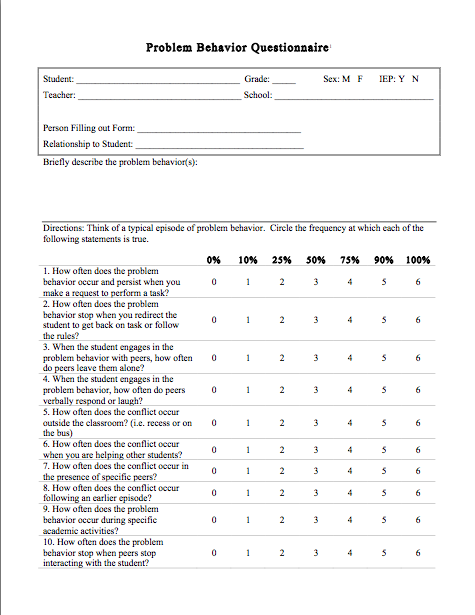 Materials. Moscow. October 6 -7 1999 g.-S. 59.
Materials. Moscow. October 6 -7 1999 g.-S. 59.
67. Serov Yu.I., Alexandrov A.A. A new method of closed subfascial transection of communicating veins in varicose veins. Bulletin of Surgery. -1978. -#8. pp. 70 - 74.
68. Stansby J., Lintott P. Endoscopic surgery of perforating veins. Review. // Angiology and vascular surgery. 1998. - V.5. - No. 1. - P. 34 - 40.
69. Sukovatykh B.S. Mechanisms of development of decompensated forms of varicose veins / Sukovatykh B.S., Nazarenko P.M., Belikov L.M., Rodionov O.A., Abramova S.A.// Bulletin of Surgery. -nineteen99. No. 1. - P. 36 - 40.
70. Sultanaliev T.A., Tursynbaev S.E. Etiopathogenetic aspects of surgical treatment of uncompensated varicose veins. Clinician. -1995. No. 2. - P. 71 - 73.
71. Tsukanov Yu.T., Tsukanov A.Yu. Quality of life of patients in the surgical treatment of varicose veins of the lower extremities // Surgery No. 11-2003.-S. 11-16.
72. Chadaev A.P., Butkevich AD, Ershov I.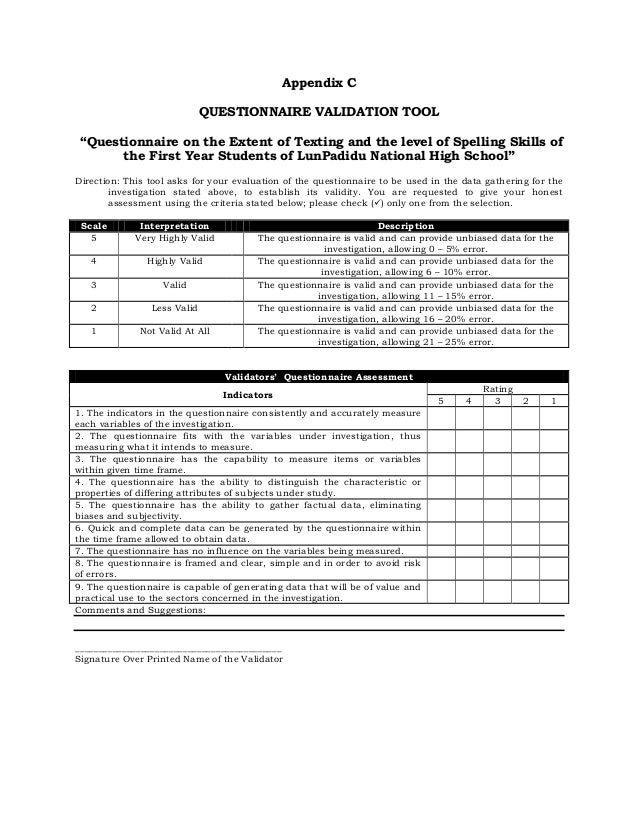 V. Surgical treatment of trophic ulcers of venous etiology, wound process in surgery and military field surgery. Sat. scientific works. Saratov. -nineteen96. S. 142-144.
V. Surgical treatment of trophic ulcers of venous etiology, wound process in surgery and military field surgery. Sat. scientific works. Saratov. -nineteen96. S. 142-144.
73. Chadaev A.P., Butkevich A.Ts., Nurlyev Yu. Staged tactics in the surgical treatment of venous trophic ulcers // Abstracts of the Second Conference of the Association of Phlebologists of Russia. Materials. Moscow. October 6-7, 1999. P. 89.
74. Chernyshev VN, Krygin SG Endoscopic transection of communicating veins in venous insufficiency // II Congress of surgeons of Kyrgyzstan. Abstracts of reports. Beshkek, October 4-5, 1995, pp. 260 261.
75. Chernyshev VN, Krygnn SG Application of endoscopic technology for transection of communicating veins of the leg in chronic venous insufficiency // Angiology and Vascular Surgery. nineteen97. - No. 2. - S. 94 -104.
76. Shaydakov EV Diagnosis and surgical correction of blood flow disorders in varicose veins // Abstract of the thesis. diss. cand.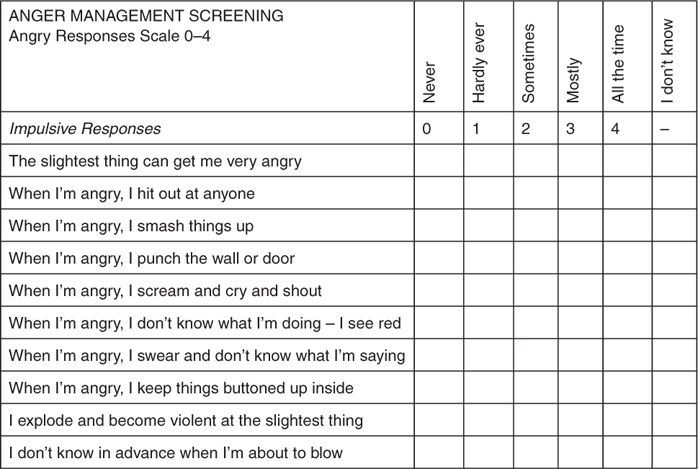 honey. Sciences. SPb. -1994. -WITH. 203 + ill.
honey. Sciences. SPb. -1994. -WITH. 203 + ill.
77. Shevchenko Yu.L., Stoyko Yu.M., Shaydakov E.V. Regional hemodynamic disorders in segmental post-thrombotic lesions of the deep veins of the leg. Phlebolymphology. -1999. No. 10. - P. 2 - 4.
78. Endoscopic dissection of perforating veins in varicose veins: Guidelines // Ed. acad. RAS and RAMS, professors B.C. Saveliev. M.: Publishing house NTSSSh them. AN. Bakuleva RAMS, 1998. - 12 s, ill.
79. Yablokov E.G., Kirienko A.I., Bogachev V.Yu. Chronic venous insufficiency. M.: Publishing house "Bereg", 1999. -128 p.
80. Albanese A.R. Escoplage: a new surgical technique for the treatment of varicose vein in the legs. //J. Cardiovasc. Surg. 1965 Vol. 6. - P. 491-494.
81. Anwar S. et al. Subfascial endoscopic perforator surgery: a review / Anwar S „ Shrivastava V, Welch M, al-Khaffaf H. // Hosp. Med. 2003 Aug; 64(8): 47983.
82. Askar O. Surgery of the deep foscia of the leg // British J Surgery. nineteen65, v. 52, N2, p. 107-121.
nineteen65, v. 52, N2, p. 107-121.
83. Baron HC, Saber AA, Wayne M. Endoscopic subfascial surgery for incompetent perforator veins in patient with active venous ulceration // Surg. Endosc. 2001 Jan; 15(1): 38-40.
84. Bende J. et al. A new method for the management of perforated veins in the lower extremities / Bende J, Matyas L, Virag B, Hajdu J. Helembai L, Medgyesy G, Senanszky M. // Orv-Hetil. 1998. Aug 23. Vol. 139. No. 34. P 2017 9.
85. Bengisun U., Murat Tagil S., Elhan A. Accessibility of perforating veins from the superficial posterior compartment: an anatomic dissection study // Eur. J Vase. Surg. 2003 Jun; 25(6): 552-5. nine0003
86. Bergan J ,J. Advaces in evaluation and treatment of chronic venous insufficiency // J. Angiology. vase. Surg. 1995 Vol. 3. P. 59 76.
87. Bergan J.J., Murray J., Grecson K. Subfascial endoscopic perforator surgery: a preliminary repont //Ann. vase. Surg. 1996 Vol. 10. P. 211-219.
88. Bianchi C. Subfascial endoscopic perforator vein surgery combined with saphenous vein ablation: results and critical analysis / Bianchi C. , Ballard JL., Abou-Zamzam AM., Teruya TH. //J Vase. Surg. 2003 Jul; 38(1): 67-71. nine0003
, Ballard JL., Abou-Zamzam AM., Teruya TH. //J Vase. Surg. 2003 Jul; 38(1): 67-71. nine0003
89. Bowen F.H. Subfascial ligation (Linton operation) of the perforating leg veins to treat postthrombophlebitic syndrome //Am. Surg. 1975. Vol.41. P. 147-151.
90. Bradbury AW, Ruckley CV. Foot volumetry can predict recurrent ulceration after subfascial ligation of perforators and saphenous ligation. // J. Vase. Surg. 1993. Vol.18. P. 789-95.
91. Cawezi A. Long Saphenous vin and perforating veins hemodynamic: "new"' echo-color-doppler patterns. ХШ World Congress of Phlebology, Sydney, 1998,p.228.
92. Ciostek P., Myrcha P., Noszczyk W. Ten years experience with subfascial endoscopic perforator vein surgery // Ann. vase. Surg. 2002 Jul; 16(4): 480-7.
93. Coleridge Smth, P.D. Treatment of trophic ulcers in brief aspects // Angiology today. -1999. Number 3. - S. 2-3.
94. Coleridge Smth, P.D. Inflammation and chronic venous insufficiency of the lower extremities // Medicalography.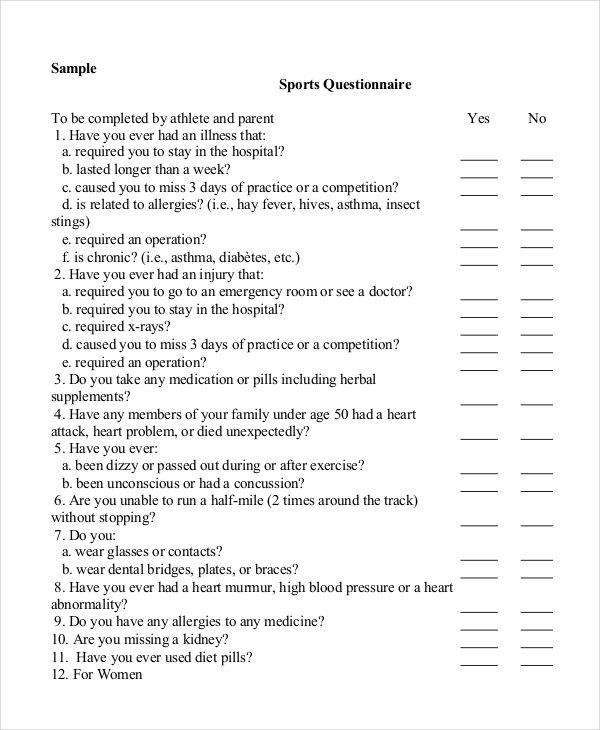 Volume 22, No. 3, 2000. S. 18-22.
Volume 22, No. 3, 2000. S. 18-22.
95. Conrad P. Endoskopic perforator interruption using laparoscopic equipment. Union Internationale de Phlebologie. 12 World Congress. London // Phlebology. -nineteen95. Vol. I.-P. 341-343.
96. Development of endoscopic dissection of perforating veins and fasciotomy for treatment of chronic venous insufficiency / Hauer G., Bergan J.J., Weraer A., Mitterhusen M., Nasralla F. // Ann. vase. Surg. 1999 Jul. Vol.13. - No. 4. P. 357-64.
97. Edwards J.M. Shearing operation for incompetent perforating veins // Brit. J. Surg.-1976. Vol. 63. - P. 885-890.
98. Fischer R Erfahrungen mit der endoscopischen Perforantensanimng // Phlebologie 1992 Vol. 21. - P. 224-229.
99. Fischer R. Surgical treatment of varicose veins; endoscopic treatment of incompetent Cockett veins // Phlebology. -1989; P. 1040-1041.
100. Fischer R. Eine neue Generation der Varizenchirurgie // Vasa. 1991 Vol. 20. No. 4. P. 311-318
101. Fischer R. Endoscopic treatment of incompetent Cockett veins // Actes du II Congress mondial Union Internationale de Phlebologie, Motreal, 1992, p. 104.
Fischer R. Endoscopic treatment of incompetent Cockett veins // Actes du II Congress mondial Union Internationale de Phlebologie, Motreal, 1992, p. 104.
102. Fischer R. Chacen der endoscopischen Perforantensamrung (EPS) beim pos-trombotischen Syndrom // Wien. Med. Wochenschr. nineteen94 Vol. 144. No. 10-11. P. 258-260.
103. Fischer R. Experience with endoscopic perforator division Phlebologie. 1992. Vol.12. P. 224-229.
104. Fischer R., Sattler G., Vanderpuye R. Le traitement endoscopique des perforantes (TCP) situation actuelle //Phlebologie. 1993. Oct-Dec. Vol.46. No. 4. P. 701707.
105. Franks P.J., Moffatt C., Conolly M. Cjmunity leg uleer clinics: effect on quality of life // Phlebology. 1994. Vol.9. P. 83-86.
106. Garratt A.M. et al. The SF-36 health survey questionnaire: an outcome measure suitable for routine use within the NHS? / Garratt A.M., Ruta D.A., Abdalla M.I. et al. // British Med. J.1993; 306: 1440-1444.
107. Garratt A. M. et al. Towards measurement of outcome for patient with varicose veins / Garratt A.M., MacDonald L.M., Ruta D.A. et al. // Qual Ass Helth Care 1993; 2:5-10.
M. et al. Towards measurement of outcome for patient with varicose veins / Garratt A.M., MacDonald L.M., Ruta D.A. et al. // Qual Ass Helth Care 1993; 2:5-10.
108. Gloviczki P. et al. Safety, feasability, and earty efficacy of subfascial endoscopic perforator surgery: A preliminary report from the North American Registry / Gloviczki P., Bergan J, Menawat S. et al. // J. Vast. Surg. 1997 Vol. 25. P. 94-105.
109. Gloviczki P. et al. Surgical technique and preliminary results of endoskopic subfascial division of perforating veins / Gloviczki P., Cambria R.A., Rliee R.Y. et al. // J. Vase. Surg. nineteen96; Vol.23.P.517-523.
110. Gloviczki P. Minimally invasive surgery in the treatment of chronic venous insufficiency // Phlebolymphology. -1999. Specialist. release. - S. 7172.
111. Guex J.J. et al. Assessment of medial leg perforating veins. / Guex J.J., Laroche J.P., Coup M. et al. // XIII World Congress of Phlebology. Sydney, 1998; p. 112.
112. Hach W. Die rezikulationskreise der priaren varicose. Spriger-Verlag. 1994; 61-64).
Die rezikulationskreise der priaren varicose. Spriger-Verlag. 1994; 61-64).
113. Hauer G. Die endoscopische lubfasciale Diszision der Perforansvenen vor-laufige Mitteilung // Vasa. -nineteen85 Vol. 14. - P. 59-61.
114. Hauer G. Operationstechnik der endoskopischen subfascialen Diszision der Perfbransvenen // Chinirg. 1987 Vol. 58 - P. 172-175.
115. Hauer G. et al. Endoscopic subfascial dissection of perforating veins / Hauer G., Barkun J., Wiser I., Deiler S. // Surg. Endosc. 1988; 2(1): 5-12.
116. Hauer G., Werner A. Subfascial endoscopic perforator vein surgery (SEPS) and fasciotomy: Treatment of severe chronic venous disease // Surg. Technol. Int. 2000; IX:193-203.
117. Herman J., Duda M. Endoscopic subfascial dissection of perforators (ESDP) vs open ligation of perforators // Rozhl. Chir. February 2003; 82(2): 75-8.
118. Hussain S.T. Souther R G., Me Winnie D.L. Simple technique for endoscopic subfascial dissection of perforating veins /letter/.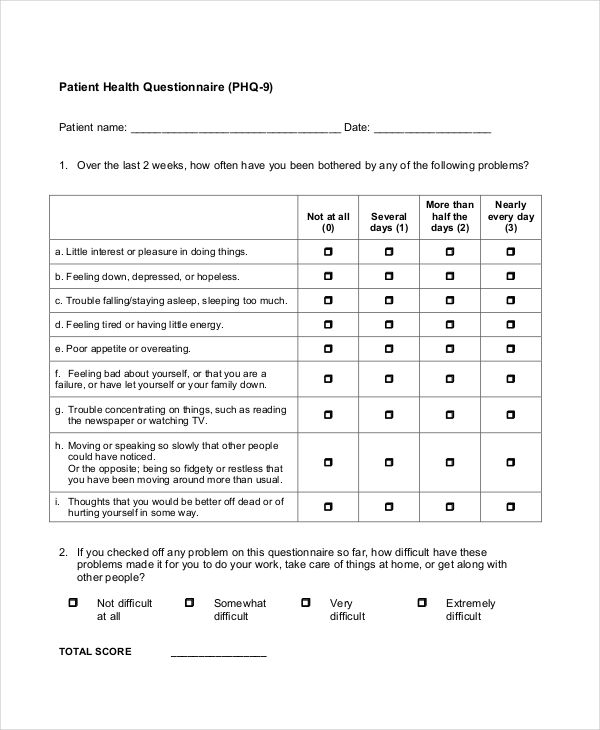 // Br J. Surg. 1997. Aug. -Vol. 84.-#8. P. 1175-1176.
// Br J. Surg. 1997. Aug. -Vol. 84.-#8. P. 1175-1176.
119. Irace L. et al. Indications and short term results of subfascial endoscopic perforator surgery (SEPS) / Irace L., Faccenna F., Gossetti M., Tozzi M., Jabbour J., Faraglia V. //Minerva Cardioangiol. February 2002; 50(1): 21-7. nine0003
120. Kalra M., Gloviczki P. Subfascial endoscopic perforator vein surgery: who benefists? // Semin. vase. Surg. 2002 Mar; 15(1): 3949.
121. Kalra M., Gloviczki P. Surgical treatment of venous ulcers: role of subfascial endoscopic perforator vein ligation // Surg. Clin. North. Am. 2003 Jun; 83(3): 671705.
122. Kempf Z. et al. Long-term results of treatment of postthrombotic syndrome according to Linton and Folder's method. / Kempf Z., Ciazynski M., Jamski J., TrystulaM. //Br. J. Surg. nineteen94 Vol. 81 (Suppl). - P. 135.
123. Kulbaski M.J. et al. Subfascial endoscopic perforator surgery: new life for an old procedure? / Kulbaski M.J., Eaves FF.3rd, Ofenloch J. C., Lumsden A.B. //J. soc. Laparoendosc. Surg. 1997. Apr-Jim. Vol.1. No. 2. - P. 135-139
C., Lumsden A.B. //J. soc. Laparoendosc. Surg. 1997. Apr-Jim. Vol.1. No. 2. - P. 135-139
124. Lacroix H. et al. Classic versus endoscopic perforating vein surgery: a retrospective study. / Lacroix H., Smeets A., Nevelsteen A., Suy R. // Acta Chir. Belg. 1998 Mar-Apr; Vol. 98-№2.- P. 71-75.
125. Lafrati M.D., Welch H.J., O'Donnell T.F. Subfascial endoscopic perforator ligation: an analysis of early clinical outcomes and cost. // J Vase Surg 19Jun 97; Vol.25.- P. 995-1000: discussion 1000-1001.
126. Lafrati M.D., Welch H.J., O Donnell T.F.jr. Subfascial endoscopic perforator ligation: An analysis of early clinical outcomes and cost. // J. Vase. Surg. 1998; Vol.26. P. 991-995.
127. Lang W. Chronic venous diseases of the leg. London Office of Health Economics. 1992:1-44.
128. Lang W. et al. Endoscopische Dissection der Perforansvenen / Lang W., Bockler D., Meister R., Schweiger H. // Chirurg.-1995. Feb; 66(2): 131-134. nine0003
129. Lang W., Schweiger U. Endoscopic subfascial sectioning of incompetent perforating veins. 17th world congress of the international union of angiology. London. 1995.-P. 267.
Endoscopic subfascial sectioning of incompetent perforating veins. 17th world congress of the international union of angiology. London. 1995.-P. 267.
130. Laroche J.P., Muller G. Atlas of pulsed Doppler Ultrasound Venography. A Les Laboratoires Servier. France. 1992.
131. Launois R, Reboul-Marty J., Henry B. Construction and validation of a quality of life questionnaire in Chronic Lower Limb Venous Insufficiency (CIVIQ) // Qual Life Res. nineteen96.Vol.5. - P. 539 - 554.
132. Lee D.W. Et al. Subfascial endoscopic perforator vein surgery (SEPS) using the ultrasonic scalpel / Lee D.W., Chan A.C, Lam Y.H., Wong S.K., Ng E.K., Law B.K., Chung SC. // Surg. Endosc. Dec 2001; 15(12): 1491-3.
133. Lee D.W. et al. Subfascial endoscopic perforator surgery for venous ulcers / Lee D.W, Lam Y.H., Chan A.C., Chung SC. //Hong Kong Med J. 2003 Aug;9(4):279-82.
134. Li XX, Wu Z.M, Wang S.M. Subfascial endoscopic perforator vein surgery in treatment of varicose of lower limb // Zhongguo Xiu Fu Chong Jian Ke Za Zhi. Nov 2002; 16(6): 374-5. nine0003
Nov 2002; 16(6): 374-5. nine0003
135. Linton R.R. The communicating veins of the lower leg and the operative technique for their ligation // Ann Surg. 1938 Vol. 107. - P. 582-593.
136. Linton R.R. The postrombobotic ulceration of the lower extremity: its etiology and surgical treatment //Ann. Surgery 1953. Vol. 38.- P. 415-433.
137. Lofqvist J. Chirurgie in Blutleere mit Rollmanschetten // Chirurgie. 1988.-Vol. 59.-p. 853-854.
138. Mahoney P.A, Nelson R.E. Venous stasis: successful outcome, and symptomatic relief in patients undergoing Linton procedures. South Dakota 1994 Vol. 2.-p. 45-48.
139. May R, Partsch H, Staubesand J. Venae Perforantes. Munich, Vienna, Baltimore: Urban & Schwarzenberg; 1981.- 253 p. +ill.
140. Mayer W, Jochmann W, Partsch H. Varicose ulcer: healing in conservative therapy. A prospective study // Wien-Med Wochenschr. 1994 Vol. 144. - P. 250-252.
141. Mebmer K. Microcirculation and chronic venous insufficiency of the lower extremities // Medicalography. Volume 22, No. 3, 2000. S. 3-4.
Volume 22, No. 3, 2000. S. 3-4.
142. Merrit Ch.R.B. Doppler Color Flow Imaging. // J. Clin. Ultrasound 1987.-Vol. 5.-P. 591-597.
143. Mozes G. et al. Surgical anatomy for endoscopic subfascial division of perforating veins / Mozes G, Gloviszki P, Menawat S.S, Fischer D.R, Carmichael S.W, Kadar A. // J. Vase. Surg. 1996 Vol. 24. - P. 800 - 808.
144. Muller S, Schreiber R, Marty A. // Helv.Chir.Acta. 1993 Jim. bd. 59. - No. 5-6. - P. 825-828.
145. Murray J.D, Bergan J.J, Riffenburgh R.H. Development of open-scope subfascial perforating vein surgery: lessons learned from the first 67 cases // Ann. vase. Surg. 1999. Jul.-Vol. 13. No. 4. - P. 372-377.
146. Negus David Leg ulcers: A practical approach to management / With radiological contributions by H. Walters // Oxford etc. Butterworth-Heinemann. 1991.C.X., 181 p. +ill.
147. Nicolaides A.N. Investigation of chronic venous insufficiency // XIII World Congress of Phlebology. Sydney 1998; p.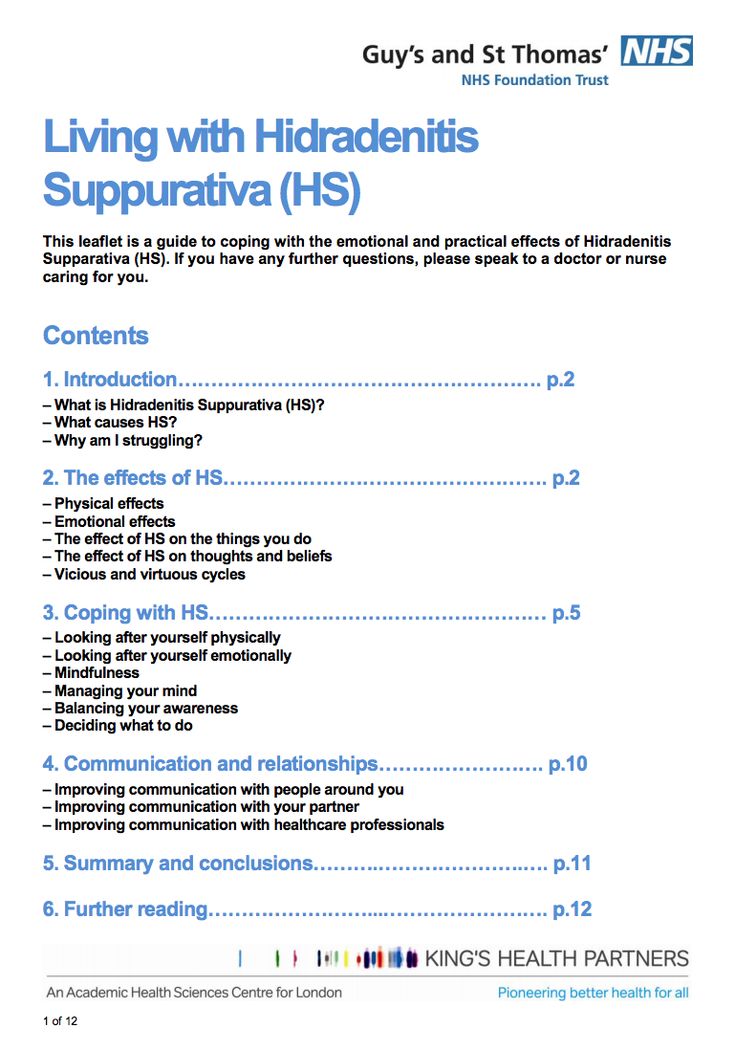 16.
16.
148. Nicolaides A.N. Executive Summary // Angiology. 2001; 52: 1-3.204; North American Subfascial Endoscopic Perforator, Surgery. Vase.1. Surg. 1999;29:489-502.
149. Padberg FT Jr. Endoscopic subfascial perforating vein ligation: its complementary role in the surgical management of chronic venous insufficiency. //Ann.Vase.Surg. May 1999 Vol. 13. - No. 3. p. 343-54.
150. Pai PR., Bhandarkar DS. Modified balloon dissector in subfascial endoscopic perforator surgery // Eur. J Vase. Endovasc. Surg. 2003 Jul; 26(1): 105-6. nine0003
151. Paraskeva P.A. et al. Endoscopic subfascial division of incompetent perforating calf veins. / Paraskeva P.A., Cheshire N., Stansby G., Darzi A „W. // Br. J. Surg. 1996 Aug. Vol. 83. - No. 8. - P. 1105-1106.
152. Phillips A.R., Fleischl J.M. Videoscopic subfascial incompetent perforator vein ablation. // BrJ Surg. Nov. 1996 Vol. 83. - P. 1552.
153. Phillips T. et al. A study of the impact of leg ulcers on quality of life: financial social, and psychologic implications / Phillips T. , Stanton B., Provan A. et al. // J. Am Acad Dermatol. nineteen94.-Vol.31. P. 49-53.
, Stanton B., Provan A. et al. // J. Am Acad Dermatol. nineteen94.-Vol.31. P. 49-53.
154. Pierik E.G.J.M., Wittens C.H.A., van Urk If. Subfascial endoscopic ligation in the treatment of incompetent perforating veins. // EUR. J Vase. Endovasc. Surg. 1995. Vol. 9.-P. 38-41.
155. Pierik E.G., van Urk H., Wittens G.H. Efficacy of subfascial endoscopy in eradicating perforating veins of the lower leg its relation with venous ulcer healing // J Vase Surg 1997. Aug.- Vol. 26. P. 255-259.
156. Pierik E.G. et al. Validation of duplex ultra-sonography in detecting competent and incompetent perforating veins in patients with venous ulceration of the lower leg
157. Pierik E.G., Toonder I.M., van Urk H., Wittens C.H. // Vase Surg. 1997 Jul.-Vol. 26.-p. 49-52.
158. Pierik E.G.J.M., van Urk H., Wittens C.H. A. Endoscopic Ligation of perforating veins using a medianoscope // Surgical Laparoscopy and Endoscopy 1997. -Vol.7.-№1.-P. 25-28.
159. Pietrivallo A. et al. Endoscopic interventions for insufficiency of perforating veins of the lower extremities / Pietrivallo A, Pataro E., Cocozza C., Vidal R, Dandolo M. // Phlebolymphology. 2003. No. 19. pp. 5-10.
et al. Endoscopic interventions for insufficiency of perforating veins of the lower extremities / Pietrivallo A, Pataro E., Cocozza C., Vidal R, Dandolo M. // Phlebolymphology. 2003. No. 19. pp. 5-10.
160. Podiaha J. et al. Endoscopic elimination of perforators in Union's line in the leg / Podiaha J., Jurka M., Gebauerova L., Vedra P. et al. // Rozhl. Chir. 1996 Jul. -Vol. 75.-No. 7.-355-357.
161. Price P., Harding K. Quality of life (Letter to the editor) / Lancet 1995; 346: (8972).
162. Procaccini E. et al. Role of the subfascial endoscopic perforator vein surgery in the treatment of venous ulcers / Procaccini E., Ruggiero R., Scuderi V., Mandate M., De Martino A., Perrotta S. // Minerva Chir. 2001 Jun; 56(3): 273-82. nine0003
163. Proebstle T.M. et al. Endoscopic fasciotomy and subfascial perforator division for chronic stasis ulcers / Proebstle T.M., Weisel G., Voit C., Peter R.U. // Hautarzt. 1999 Aug; 50(8): 566-71.
164. Proebstle T.M. et al. Subfascial endoscopic perforator surgery with tumescent local anesthesia / Proebstle T.M., Bethge S., Barnstedt S., Kargl A., Knop J., Satter G. //Dermatol. Surg. 2002 Aug; 28(8): 689-93.
Subfascial endoscopic perforator surgery with tumescent local anesthesia / Proebstle T.M., Bethge S., Barnstedt S., Kargl A., Knop J., Satter G. //Dermatol. Surg. 2002 Aug; 28(8): 689-93.
165. Proebstle T.M. Surgical therapy of venous leg ulcers // Hautarzt. 2003 Apr; 54(4): 379-86, quiz 387-8. Epub 2003 Mar 11.
166. Puts J. P., Gniwez J. A. Surgical treatment of the post-thrombotic syndrome: improvement of the Linton operation // Br. J. Surg. 1993. Vol. 80 (Suppl). P. 115.
167. Ramlet A.A. Microcirculation and trophic changes caused by chronic venous insufficiency of the lower extremities // Medicalography. Volume 22, No. 3, 2000. S. 23-26.
168. Rechner J. et al. Technique of endoscopic subfascial CO2 insufflation-dissection of perforator veins / Rechner J., Riegler FM., Ebner S., Muller W., Szinicz G. // Zentralbl Chir. 2001 Jul; 126(7): 501-4. nine0003
169. Rhodes J.M. et al. Endoscopic perforator vein division with ablation of superficial reflux improves venous hemodynamics / Rhodes J. M., Gloviczki P., Canton L., Heaser T.V., Rooke T.W. // vase. Surg. 1998 Nov. - Vol. 28. - No. 5. - P. 839-847.
M., Gloviczki P., Canton L., Heaser T.V., Rooke T.W. // vase. Surg. 1998 Nov. - Vol. 28. - No. 5. - P. 839-847.
170. Rhodes J.M. et al. Factors affecting clinical outcome following endoscopic petforator vein / Rhodes J.M., Gloviczki L.G., Rooke T., Lewis B.D., Lindsey J.R. // Am J Surg. 1998. Aug. Vol. 176.-№2-P. 162-167.
171. Robison J.G., Elliott B.M., Kaplan AJ. Limitations of subfascial ligation for refractory chronic venous stasis ulceration // Ann. vase. Surg. nineteen92 Vol. 6. - P. 914.
172. Rommens P. et al. De chirurgische behandeling van het postphlebitis syndrom / Rommens P., DHalewin M., Lerut T., Gmwez J. // Acta. Chir. Belg. 1985 Vol. 85.-P. 359-362.
173. Ruckley CV. Socioeconomic impact of chronic venous insufficiency and leg ulcer// Angiology. 1997 Vol. 48. - P. 67-69.
174. Sachs, Thiele H., Gai H. Crste Erfahnmgen mit der endoscopisch sub-faszialen Dissektion der Perforansvenen (ESDP) nach 100 Eingriffen.// Zentralbl. Chir. nineteen94 Vol. 119. - No. 7. - P. 501-505.
119. - No. 7. - P. 501-505.
175. Saharay M., Scurr J.H. Minimally invasive surgery for perforator vein incompetence // Cardiovasc-Surg. Dec 1996 Vol. 4. - No. 6. - P. 701-705.
176. Samson R.H, Schowalter D.R. Stocking and the prevention of recurrent venous ulcer// Dermatol Surg. 1996 Vol. 22. - P. 373-376.
177. Sattler G, Mossier K, Hagedorn P. New aspects in endoscopic dissection of incompetent perforators // Actes du ll Congress mondial Union Internationale de Phlebologie, Montreal, 1992, p. 138.
178. Schmid-Schonbein G.W. Interaction of leukocytes and endothelium in chronic venous insufficiency of the lower extremities // Medicogra-fiya. Volume 22, No. 3, 2000. pp. 8-12.
179. Sparks S.R. et al. Early benefits of subfascial endoscopic surgery (SEPS) in healing venous ulcers / Sparks S.R, Ballard J.J, Bergan J.J, Killeen J.D. // Ann. vase. Surg. 1997 Jul; Vol. 11.-No. -P. 367-373.
180. Strand L, Madsen H.C. Subfascial endoscopic supplementary of perforating veins. Experiences with the first 100 procedures // Ugeskr Laeger. 2001 Feb 5; 163(6): 747-9
Experiences with the first 100 procedures // Ugeskr Laeger. 2001 Feb 5; 163(6): 747-9
181. Stuart W.P. et al. Saphenous surgery does not correct perforator incompetence in the presence of deep venous reflux / Stuart W.P, Adam D.J, Allan P.L, Ruckley C.V, Bradbury A.W. //J. vase. Surg. 1998 Nov. Vol. 28. - No. 5. - P. 834-838
182. Szendroi T. et al. Endoscopic subfascial vein dissection / Szendroi T, Szucs I, Miszti G, Kathy S „ Hadju Z. // Orv-Hetil. 1998 Mar 15 Vol. 139.-No.11.-P.631-633.
183. Szostek M. et al. Recurrences after surgical treatment of patients with post-thrombotic syndrome of the lower extremities / Szostek M., Skorski M, Zajac S., Kosicki A., Zlotorowicz W., FraczekM. //Eur. J. Vase. Surg. nineteen88 Vol. 2. - P. 191-192.
184. Takashi O., Bergan J.J., Schmid-Schoenbein G.W. Leukocyte infiltration of venous valves // American Venous Forum. Abstract No. 6. 20-23 Feb 1997; San Antonio, Texas; p 31.
185. Tazelaar DJ. Treatment of venous ulcers // Ned Tijdschr Geneeskd. 2003/ Aug 16; 147(33): 1576-80.
2003/ Aug 16; 147(33): 1576-80.
186. Tawes R.L. et al. Endoscopic Technique for Subfascial Perforating Vein Interuption / Tawes R.L., Wetter A. Hermann G.D., Fogarty T.J. // J Endovasc. Surg. nineteen96.-Vol.3.-P. 414-420.
187. Ting A.C. et al. Clinical outcomes and changes in venous hemdynam-ics after subfascial endoscopic perforating vein surgery / Ting A.C., Cheng S.W., Ho P., Wu L.L., Cheung G.C. // Surg. Endosc. 2003 Jun 13.
188. Trindade J.M., Giria J. Perforating veins endoscopic ligation in the syndrome (Linton's endoscopic op.) // Actes du 11 Congress mondial Union Internationele de Phlebologie, Montreal, 1992, p. 168.
189. Jantet G. Epidemiology of venous diseases. Review of the current situation // Phlebolymphology. nineteen99. Spec. release. S.7-8. Materials of the 11th Congress of the European Branch of the International Anthological Union. Rome, October 1997
190. Jugenheimer M., Nagel K., Junginger T.: Ergebnisse der endoskopischen Perforans dissektion // Chirurg 1991. Vol.62. - No. 8. - P. 625-628.
Vol.62. - No. 8. - P. 625-628.
191. Jugenheimer M., Nagel K., Junginger T. Ergebnisse der endoscopischen perforans venen dissection// Vasa Suppl. -1991. Vol.33. - P. 104-105.
192. Jungenheimer M. Die endoscopische subfasciale Perforans venen dissektion im Behandlungkonzept der primaren Varikosis, Medizinische Klinik (1992) 87: 289292.
193. Jugenheimer M., Junginger T. Endoscopic subfascial sectioning of perforating veins in the treatments of primary varicosities // World J. Surg. 1992 Vol. 16. - P. 971-975.
194. Jugenheimer M., Mayer W., Uckele M. Endoscopic subfascial dissection of the perforating veins: treatment results // Surg. Technol. Int. 2003 Jun; 11:202-5.
195. Van Damme H. et al. Resurgense of vien perforation surgery: SEPS (subfascial endoscopic perforator surgery) / Van Damme H., Quaniers J., Lambert J., Limet R.//Rev Med Liege. 2001 Jul; 56(7): 511-20. nine0003
196. Van-Rij A.M., Solomon C., Christie R. Anatomic and physiologic characteristics of venous ulceration // J Vase. Surg. 1994 Vol. 20. - No. 5. p. 759-764.
Surg. 1994 Vol. 20. - No. 5. p. 759-764.
197. Viszy L., Beznicza H, Batorfi J. Cryosurgery and endoscopy in treatment of varicose veins //Magy. Seb. 2002 Apr, 55(2): 68-71.
198. Wigger P. Surgical therapy of primary varicose veins // Schweiz Med Wochenschr. 1998 Nov 7; 128(45): 1781-8.
199. Wilkinson G.E., Maclaren I.F. Long-term review of procedures for venous perforator insufficiency// Surg. Ginecol. obstet. nineteen86 Vol. 163. - P. 117-120.
200. Whiteley M.S., Smith J.J., Galland R.B. Subfascial endoscopic perforator vein surgery (SEP5): current practice among British surgeons // Ann Coll. Surg. English 1998 Mar. - Vol. 80. - No. 2. - P. 104-107.
Ukrainian Research Institute of Social and Maritime Psychiatry and Narcology
For psychological assistance to the soldiers of the ATO, get art therapy
nine0405 Parliamentary hearings on health care reform in Ukraine
European approaches to the rehabilitation of patients in shipboard psychiatric clinics: interview with international experts
Comorbidity of mental disorders and staleness of psychoactive speeches: what is the problem?
Lviv psychiatric nurses: Intercompetences of psychiatry
As part of the project "Mastering that unites everyone!" I went to the bienale under the name "Diagnosis: Artist!"
On-line conference "Protocols for psychiatric care in practice"
10/30/2015 the Committee for Health Protection of the Verkhovna Rada of Ukraine held a "round style" "Psychiatric care in Ukraine.
 Wikis of the day and ways of reform"
Wikis of the day and ways of reform"
November 10 - All-World Day of Mental Health
A scientific-practical conference was held "On controlled drugs in the practice of a family doctor"
The draft law "On psychiatric assistance" proposes the protection of the rights of osib, recognition by non-employees, - Oleksandra Pavlenko
nine0405 Ukraine continues to implement mechanisms for providing medical and psychological rehabilitation assistance to participants in the ATO
Promoted by the Ministry of Health of Ukraine to change the Law of Ukraine "On Psychiatric Assistance" was taken away the praise of psychiatrists and narcologists
April 13, 2015 at 14.00 at the Ministry of Health of Ukraine held a working meeting of members of a multidisciplinary working group on the topic "Post-traumatic stress disorder".

Sublime suicide as a socio-psychological problem of welfare
The Ministry of Health discussed changes to the Law of Ukraine "On Psychiatric Assistance"
A MEETING OF THE BOARDS OF THE MOH OF UKRAINE WAS HELD FOR THE PARTICIPATION OF THE PRIME MINISTER OF UKRAINE ARSENIY YATSENYUK.
PARLIAMENTARY HEARING "About the military medical doctrine of Ukraine"
At the first working meeting of the Expert and Technical Group, it was discussed that it was adopted as the basis for the draft five nomenclatures 19/05/2015
For military servicemen of the ATO, a defense was made, which can help many soldiers of the ATO to get out of the experienced zhakhs of war and turn back to a peaceful life
On April 23-24, 2015, a two-day scientific and practical conference with international participation "Methodological and legal aspects of diagnostics, therapy and social assistance in mental and behavioral disorders in various age groups" was held near Kiev0406
EC experts assessed the implementation of the Ministry of Health of Ukraine of another phase of the Plan for the liberalization of the visa regime
The Ministry of Health is doing its best to provide medical and psychological support and rehabilitation for demobilized participants of the ATO
Kiev hosted the first cycle of a seminar on work with post-traumatic stress disorders
nine0003
"Medical rehabilitation of military servicemen"
The Minister of Health, having discussed with the public the problems of giving psychological support
Another festival of people with special needs "Zirka nadi"
Natalya Lisnevska met with representatives of the Ministry of Health of the WHO in Ukraine
All-Ukrainian scientific-practical conference "Medical-psychological and social support in the minds of epic situations"
"Lviv Psychiatric Health Care" "War.
 Injury. Healing… Myths and realities of PTSD in Ukraine” 14-15 leaf fall 2014. m. Lviv
Injury. Healing… Myths and realities of PTSD in Ukraine” 14-15 leaf fall 2014. m. Lviv
On July 16, 2014, in the Secretariat of the Upovnovazhenny Verkhovna Rada for the Rights of the People, a signature was signed on the scientific support of the Ukrainian Scientific and Advanced Institute of Social and Maritime Psychiatry and Narcology of Ukraine (
International scientific and practical conference "Actual nutrition of social and ship psychiatry of the XXI century"
Another part of the training for lawyer-trainers/moderators was launched to exchange the certificate between lawyers, how to issue BVPD
"The Ministry of Health issued a cost-free certificate course for advanced qualifications of psychologists"
Kiev hosted a conference "Short time to get drunk on drugs - encouraging prospects for the improvement of human life" 09/11/2014
"Direction of a defender from criminal pursuance on the basis of favors, from the stagnation of other entrances to the criminal-legal influx, from the security of access to proper medical assistance"
monitoring visit of the Entrusted Verkhovna Rada of Ukraine
Ukrainian psychiatrists ask to prevent a psychiatric examination of Nadezhda Savchenko
Psychological education of volunteers
Initial seminar for social practitioners from 15 regions of Ukraine
nine0406
Ukraine - Nimechchina - Poland.
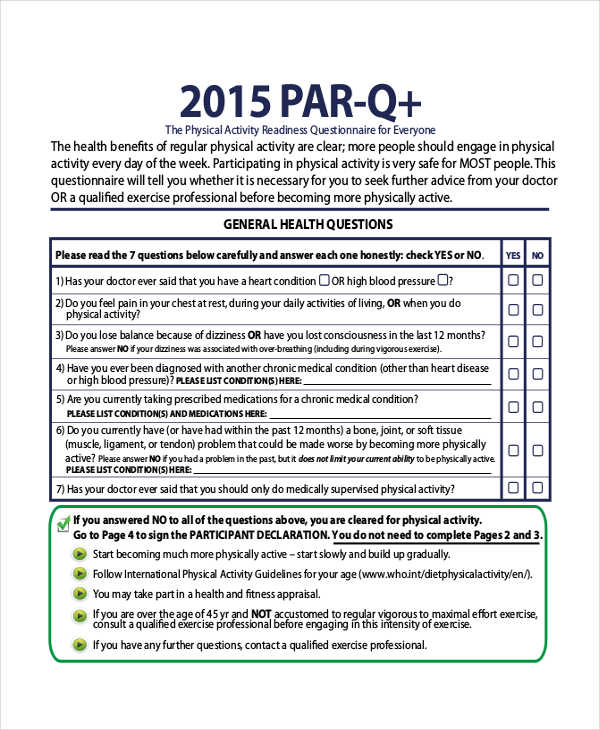 The system of mental health protection - a course towards European integration.
The system of mental health protection - a course towards European integration.
27.02.2014 the Ministry of Health of Ukraine discussed the need for psychiatric assistance to the victims after the tragic events
Psychologists advise victims of tragic experiences in Ukraine
Previous Nastupna nine0003
-
For psychological assistance to the soldiers of the ATO, get art therapy
-
Parliamentary hearings on health care reform in Ukraine
-
European approaches to the rehabilitation of patients in ship psychiatric clinics: a discussion with international experts
-
Comorbidity of mental disorders and staleness of psychoactive speeches: what is the problem?
-
Lviv psychiatric nurses: Intercompetences of psychiatry
- nine0405 As part of the project "Mastercraft that unites everyone!" I went to the bienale under the name "Diagnosis: Artist!"
-
On-line conference "Protocols for psychiatric care in practice"
-
10/30/2015 the Committee for Health Protection of the Verkhovna Rada of Ukraine held a "round style" "Psychiatric care in Ukraine.
 Wikis of the day and ways of reform"
Wikis of the day and ways of reform" -
November 10 - All-World Day of Mental Health
-
A scientific-practical conference was held "On controlled drugs in the practice of a family doctor"
- nine0405 The bill "On psychiatric assistance" promotes the protection of the rights of osib, recognition by non-educators, - Oleksandra Pavlenko
-
Ukraine is continuing to implement mechanisms for providing medical and psychological rehabilitation assistance to participants in the ATO
-
Promoted by the Ministry of Health of Ukraine to change the Law of Ukraine "On Psychiatric Assistance" took away the praise of psychiatrists and narcologists
-
April 13, 2015 at 14.
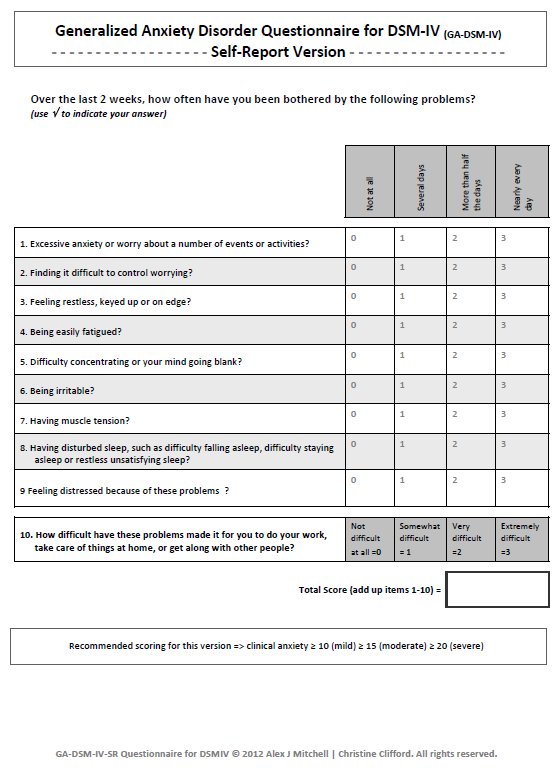 00 at the Ministry of Health of Ukraine held a working meeting of members of a multidisciplinary working group on the topic "Post-traumatic stress disorder".
00 at the Ministry of Health of Ukraine held a working meeting of members of a multidisciplinary working group on the topic "Post-traumatic stress disorder". -
Sublime suicide as a socio-psychological problem of welfare
nine0586 -
The Ministry of Health discussed changes to the Law of Ukraine "On Psychiatric Assistance"
-
A MEETING OF THE BOARDS OF THE MOH OF UKRAINE WAS HELD FOR THE PARTICIPATION OF THE PRIME MINISTER OF UKRAINE ARSENIY YATSENYUK.
-
PARLIAMENTARY HEARING "About the military medical doctrine of Ukraine"
-
At the first working meeting of the Expert and Technical Group, it was discussed that it was adopted as the basis for the draft five nomenclatures 19/05/2015
-
For military servicemen of the ATO, a defense was made, which can help many soldiers of the ATO to get out of the experienced zhakhs of war and turn back to a peaceful life
-
On April 23-24, 2015, a two-day scientific and practical conference with international participation "Methodological and legal aspects of diagnostics, therapy and social assistance in mental and behavioral disorders in various age groups" was held near the city of Kiev6
-
Experts of the EC conducted an assessment of the Ministry of Health of Ukraine of another phase of the Plan for the liberalization of the visa regime
-
The Ministry of Health is doing its best to provide medical and psychological support and rehabilitation for demobilized participants of the ATO
-
Kiev hosted the first cycle of a seminar on work with post-traumatic stress disorders
nine0583 -
The Minister of Health, having discussed with the public the problems of giving psychological support
-
Another festival of people with special needs "Zirka nadi"
nine0586 -
Natalya Lisnevska met with representatives of the Ministry of Health of the WHO in Ukraine
-
All-Ukrainian scientific-practical conference "Medical-psychological and social support in the minds of epic situations"
- nine0405 "Lviv Psychiatric Health Care" "War.
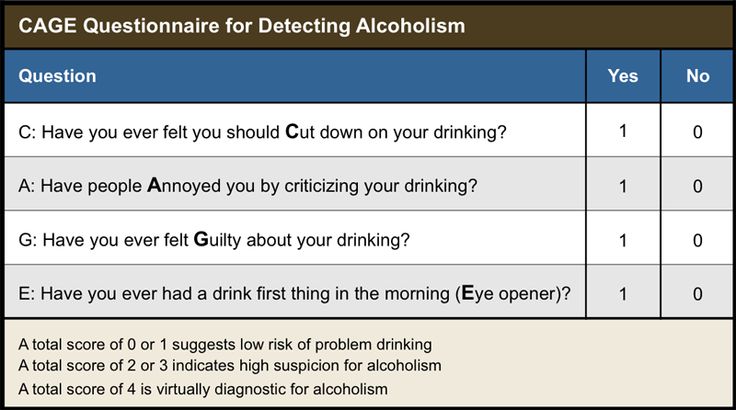 Injury. Healing… Myths and realities of PTSD in Ukraine” 14-15 leaf fall 2014. m. Lviv
Injury. Healing… Myths and realities of PTSD in Ukraine” 14-15 leaf fall 2014. m. Lviv -
On July 16, 2014, in the Secretariat of the Upovnovazhenny Verkhovna Rada for the Rights of the People, a signature was signed on the scientific support of the Ukrainian Scientific and Advanced Institute of Social and Maritime Psychiatry and Narcology of Ukraine (
-
International scientific and practical conference "Actual nutrition of social and ship psychiatry of the XXI century"
-
Another part of the training for lawyer-trainers/moderators was launched to exchange the certificate between lawyers, how to issue BVPD
nine0586 -
"The Ministry of Health issued a cost-free certificate course for advanced qualifications of psychologists"
-
Kiev hosted a conference "Short time to get drunk on drugs - encouraging prospects for the improvement of human life" 09/11/2014
- nine0405 "Director of the defender of criminal pursuance on behalf of the interests, from the stagnation of the other criminal-legal inflows, from the security of access to proper medical assistance"
-
monitoring visit of the Appointed Verkhovna Rada of Ukraine
-
Ukrainian psychiatrists ask to prevent a psychiatric examination of Nadezhda Savchenko
-
Psychological education of volunteers
-
Initial seminar for social practitioners from 15 regions of Ukraine
-
nine0406
-
Ukraine - Nimechchina - Poland.
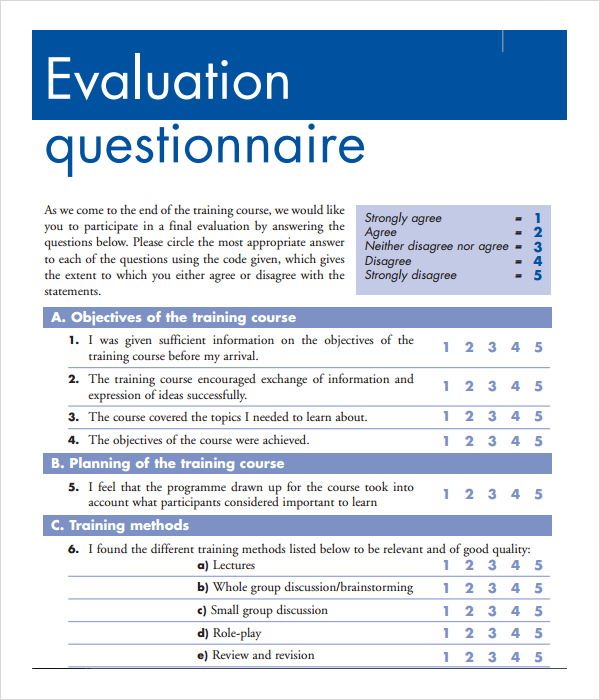 The system of mental health protection - a course towards European integration.
The system of mental health protection - a course towards European integration. -
27.02.2014 the Ministry of Health of Ukraine discussed the need for psychiatric assistance to the victims after the tragic events
nine0583




